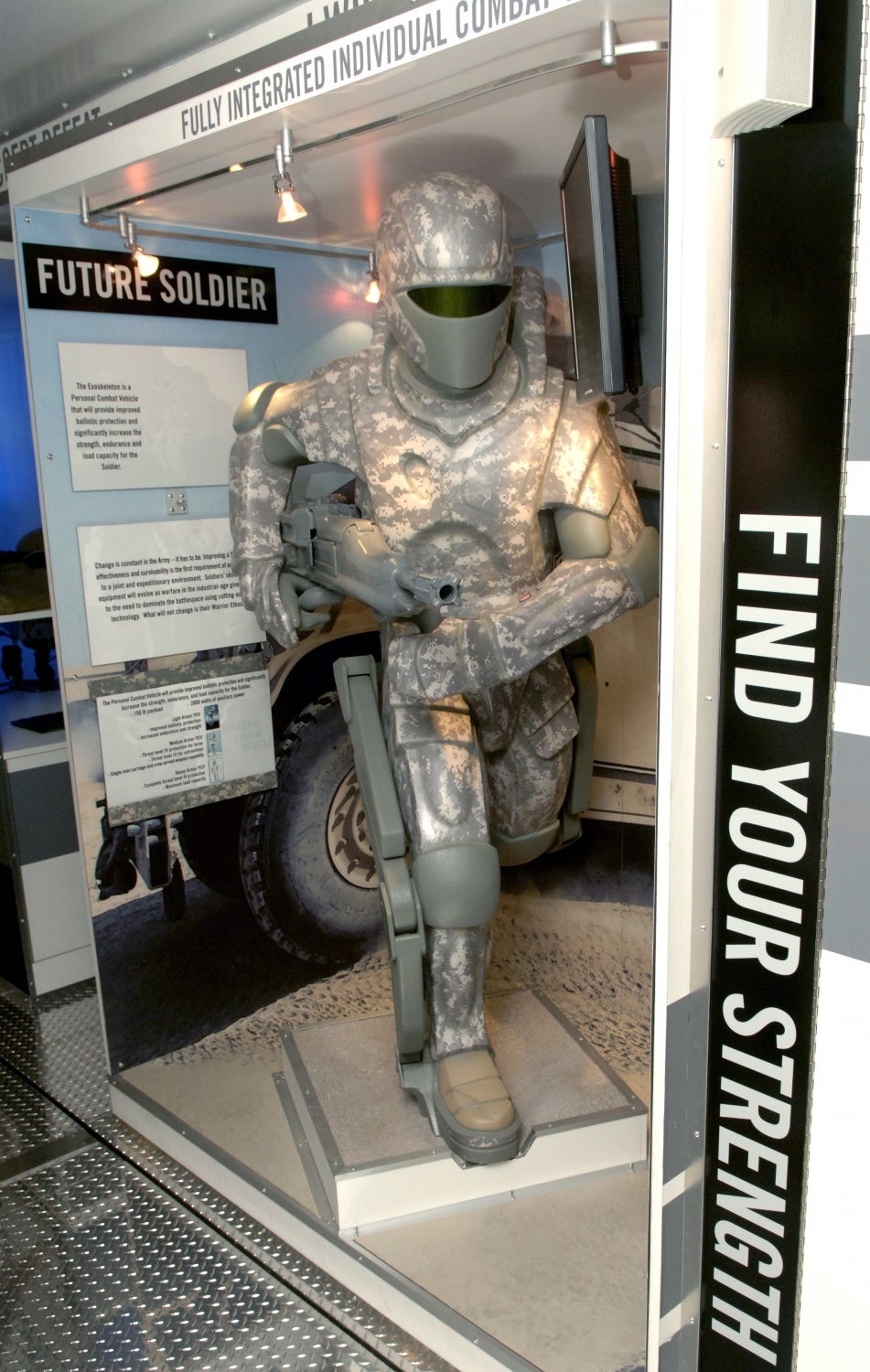When the subject is the future of infantry, the conversation inevitably turns to one thing: Powered, armored exoskeletons. Since the publication of Heinlein’s Starship Troopers in 1959, the concept of an armored suit with enhanced mobility from an internal power source has fascinated military futurists, quickly solidifying as a military fiction staple, and even appearing repeatedly in official “future soldier” concepts from armies and companies around the world.

A 2007 US Army Future Soldier concept, clad in a powered exoskeleton with a very 1951 Gort-esque helmet and carrying an XM307 25mm autocannon… Whatever you say, Army. US Army photo by Daren Reehl, public domain.
Yet, despite major advancements in mechanics, materials, and robotics which allow for extremely capable artificial systems, practical powered armor remains firmly in the realm of science fiction for now. Could that change? Well, the primary problem facing powered exoskeleton designers is not the actual suit, but the power source itself. High density nuclear powerplants are too large and have too many safety and security concerns to be used in this application, at least for now. Internal combustion engine such as turbines could possibly provide enough power density for some limited applications, but they are too noisy and fuel-hungry to give us Heinlein’s Mobile Infantry. Battery technology is then the only suitable option, and it presents significant issues for powered armor designers. Although batteries are silent and very safe, their energy density is extremely low. This means that any suit running on internal batteries would need to carry so much mass in electrochemical cells that its payload would be too low to be useful.
However, things change as technology improves. Electric car company Fisker Automotive has filed a patent for a new solid-state battery with a three-dimensional electrode, which the company claims will begin “a new era in solid-state materials and manufacturing technologies”. The new battery promises a much higher energy density – 2.5 times higher – than current state-of-the-art lithium-ion batteries, as well as lower cost achieved through new materials and manufacturing methods, and fast charging, Fisker says. The company claims that such a battery could power a car for 500 miles, and charge in less than a minute.
On the robotics end, the mechanics of autonomous systems continue to improve as software and hardware engineers work in concert on artificial movement. Notable robotics company Boston Dynamics released a video earlier this week of the current movement capabilities of their humanoid robot Atlas. The robot engages in flips and jumps onto obstacles, properly balancing itself like a gymnast:
Indeed, the pace of robotics is staying steady enough that the introduction of any sort of practical powered armor could be preceded – or even precluded – by advanced autonomous robots. One of the first applications of a powered exoskeleton could be as an logistics and engineering system – sort of an advanced multi-purpose forklift as depicted by SCVs in StarCraft, or the Powerloader in Aliens. In this role, it’s not difficult to imagine that an unmanned vehicle or optionally manned suit would come first – already autonomous bulldozers are being developed to fill labor gaps in places like Japan.
For the Infantry, a more promising application for high density batteries might be robotic pack mules (robodogs), which could carry equipment, water, and ammo instead of putting it on the backs of soldiers and Marines. Currently, although robodogs have been tested by the US Army and US Marine Corps, they are too noisy and failure prone for this role. Battery power along with sound dampening construction could make the concept practical enough for further development.
Of course, if these batteries prove successful they would also impact the industries that already rely on LiOn for power. Aerial drones, communications, optics, etc all would reap the benefits of lower weight and longer range and life. Also, currently manufactured land drone systems like BAE’s Ironclad UGV would become considerably more useful for the same reasons.
 Your Privacy Choices
Your Privacy Choices
